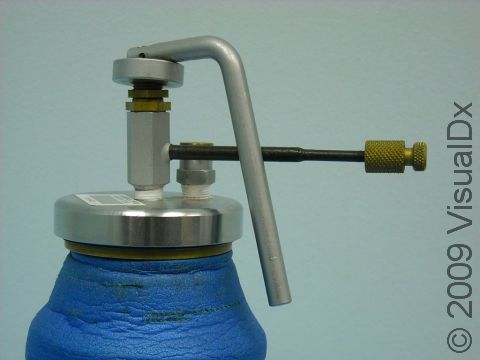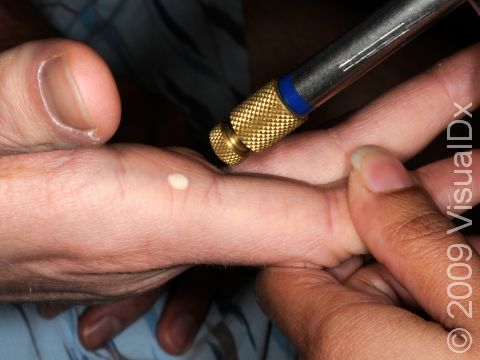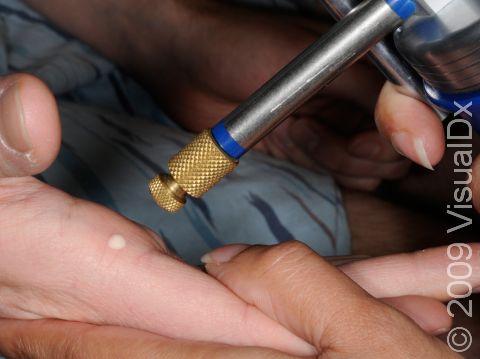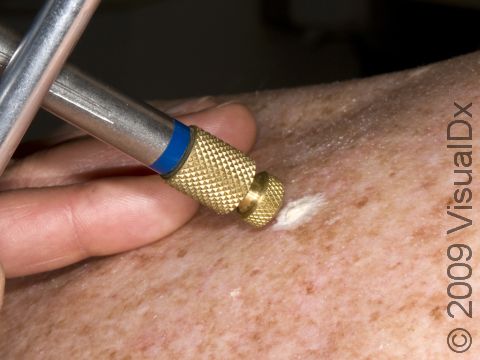Cryosurgery
Cryosurgery uses liquid nitrogen, a very low-temperature liquid, to destroy noncancerous (benign) and some cancerous (malignant) skin lesions. It is a common treatment option because of its low cost, ease of use, and effectiveness. When used by properly trained and experienced physicians, cryosurgery can remove a lesion with good cosmetic results.
Who's At Risk?
Many benign skin growths can be safely treated with cryosurgery. Warts and pre-malignant lesions related to chronic sun exposure (known as actinic keratoses) are some of the most commonly treated lesions. Depending on physician and patient preference, certain types of superficial skin cancers (ie, superficial basal cell carcinoma and Bowen’s disease) can also be treated with cryosurgery with excellent results.
Signs & Symptoms
There is no preparation needed. Rarely, patients who are very sensitive to pain may apply numbing cream for 30–90 minutes before treatment.
One of the major advantages of this simple, low-risk procedure is that it can be used at any time during a visit to a doctor. For small lesions, liquid nitrogen can be applied using a cotton-tipped applicator, metal probe, or with a spray in fewer than 30 seconds. Larger lesions may require longer freezing cycles lasting 30–60 seconds. Because liquid nitrogen is extremely cold, the treated area turns white from frost. Most patients experience temporary pain during the treatment, with a minor throbbing sensation after the procedure.
Self-Care Guidelines
Patients will notice mild swelling and redness immediately after the procedure. Mildly throbbing pain may last for several days and often peaks several hours after the procedure. A small blister may appear a few hours after the treatment. The blister will evolve into a scab over a few days, and the scab will fall off after 1–2 weeks. The treated area may stay red for a few weeks and might have temporary or permanent discoloration.
The lesion should be kept dry for the next 24 hours. Gentle cleansing with water and soap is recommended. Petrolatum or antibiotic ointment can be applied for larger lesions to protect the site from developing an infection, but this is usually not necessary for smaller lesions. If desired, the lesion can be covered with a bandage or dry gauze on a daily basis until it heals.
Treatments
Other options that may be used depend on the clinical situation. Sometimes electrocautery, surgical excision, shave biopsy, punch biopsy, curettage, laser surgery, or creams containing 5-fluorouracil, imiquimod, or diclofenac may be used.
When to Seek Medical Care
Patients should expect some degree of swelling and blistering at the treatment site, depending on the length of freezing and number of cycles carried out. There may be mild pain or itching, both of which will improve as the lesion heals. Skin discoloration (usually a lack of pigment, known as hypopigmentation) may occur, which can be permanent in some cases or slowly fade away after a few weeks to months.
Last modified on October 5th, 2022 at 7:14 pm

Not sure what to look for?
Try our new Rash and Skin Condition Finder



